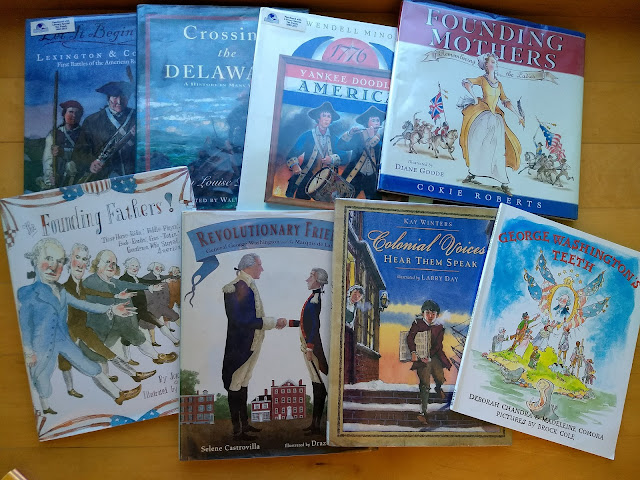Thomas Wiggins: the blind enslaved boy who became an international musical star
Song in a Rainstorm: The story of musical prodigy Thomas “Blind Tom” Wiggins.
Thomas Wiggins was deemed defective by his slave owner because of his blindness, but his mother Charity knew better. Eventually Thomas “Blind Tom” Wiggins would become one of the greatest musicians of his time, performing throughout the South even as the Civil War raged and eventually throughout the United States, Canada, and Europe. A talented pianist, singer, and composer, he performed classical, popular, and original compositions, and wowed audiences with his amazing memory, agility, and creativity. This fascinating picture book tells a compelling and inspiring story. Smaller distinct text throughout the book as well as back matter provide additional details about Wiggins' life.
Blind Tom: slave piano prodigy [HD] Into The Music, ABC Radio National -- a brief 5 minute biography of Blind Tom, but note that this biography discusses the fact that in his own time Blind Tom was considered part musical genius and part circus freak at a time when the freak show was extremely popular in American culture. The picture book does not discuss Thomas Wiggins’ popularity in these terms.
John Davis Pianist Pursuit of Blind Tom – 18 minute video about pianist John Davis’ personal discovery of Blind Tom’s music and story. (John Davis has recorded an album of his music.) This also discusses the advertisement of Tom as a freak show, the misunderstanding of him as lacking in intelligence, and Tom’s owner General Bethune using his performances to raise money for the Confederacy. This video also discusses the issue of exploitation and the litigation about his guardianship after emancipation. Features brief interviews with the descendants of both Blind Tom and General Bethune (and their eventual meeting at a performance by John Davis).
Opening Our Eyes to Thomas "Blind Tom" Wiggins by The Planetary Music Movement -- this 48 minute celebration of Thomas Wiggins' life and music alternates between performances of his compositions and discussion of his life. I did not watch this much longer biographical video in its entirety, so preview if you are concerned about content.
Thomas Wiggins was deemed defective by his slave owner because of his blindness, but his mother Charity knew better. Eventually Thomas “Blind Tom” Wiggins would become one of the greatest musicians of his time, performing throughout the South even as the Civil War raged and eventually throughout the United States, Canada, and Europe. A talented pianist, singer, and composer, he performed classical, popular, and original compositions, and wowed audiences with his amazing memory, agility, and creativity. This fascinating picture book tells a compelling and inspiring story. Smaller distinct text throughout the book as well as back matter provide additional details about Wiggins' life.
After reading this picture book together, we enjoyed learning a bit more about him and listening to some of his compositions performed on YouTube. Here were some of our favorites:
The Rainstorm Opus 6 by Thomas Wiggins ("Blind" Tom) – a birds' eye view performance that shows the pianists’ hands and piano action.
"The Battle of Manassas" performed by pianist Jeannette Fang assisted by Jean Bernard Cerin – this is not the best recording of the piece, but it is worth listening to the brief introduction about the piece and composer (then listen to the next link of the performance instead). I enjoyed learning how Wiggins incorporated innovative elements such as the tone cluster in his compositions that music historians had previously assumed to be used for the first time in much later 20th century works.
"Blind Tom" Wiggins "Battle of Manassas", Monica Chew, piano – a terrific performance of this piece with excellent recording quality.
Thomas Wiggins: Water in the Moonlight (1866) – follow along with the sheet music during the performance.
"The Battle of Manassas" performed by pianist Jeannette Fang assisted by Jean Bernard Cerin – this is not the best recording of the piece, but it is worth listening to the brief introduction about the piece and composer (then listen to the next link of the performance instead). I enjoyed learning how Wiggins incorporated innovative elements such as the tone cluster in his compositions that music historians had previously assumed to be used for the first time in much later 20th century works.
"Blind Tom" Wiggins "Battle of Manassas", Monica Chew, piano – a terrific performance of this piece with excellent recording quality.
Thomas Wiggins: Water in the Moonlight (1866) – follow along with the sheet music during the performance.
Blind Tom: slave piano prodigy [HD] Into The Music, ABC Radio National -- a brief 5 minute biography of Blind Tom, but note that this biography discusses the fact that in his own time Blind Tom was considered part musical genius and part circus freak at a time when the freak show was extremely popular in American culture. The picture book does not discuss Thomas Wiggins’ popularity in these terms.
John Davis Pianist Pursuit of Blind Tom – 18 minute video about pianist John Davis’ personal discovery of Blind Tom’s music and story. (John Davis has recorded an album of his music.) This also discusses the advertisement of Tom as a freak show, the misunderstanding of him as lacking in intelligence, and Tom’s owner General Bethune using his performances to raise money for the Confederacy. This video also discusses the issue of exploitation and the litigation about his guardianship after emancipation. Features brief interviews with the descendants of both Blind Tom and General Bethune (and their eventual meeting at a performance by John Davis).
Opening Our Eyes to Thomas "Blind Tom" Wiggins by The Planetary Music Movement -- this 48 minute celebration of Thomas Wiggins' life and music alternates between performances of his compositions and discussion of his life. I did not watch this much longer biographical video in its entirety, so preview if you are concerned about content.
Here are links to all our favorite picture book read-alouds by subject:





Comments
Post a Comment